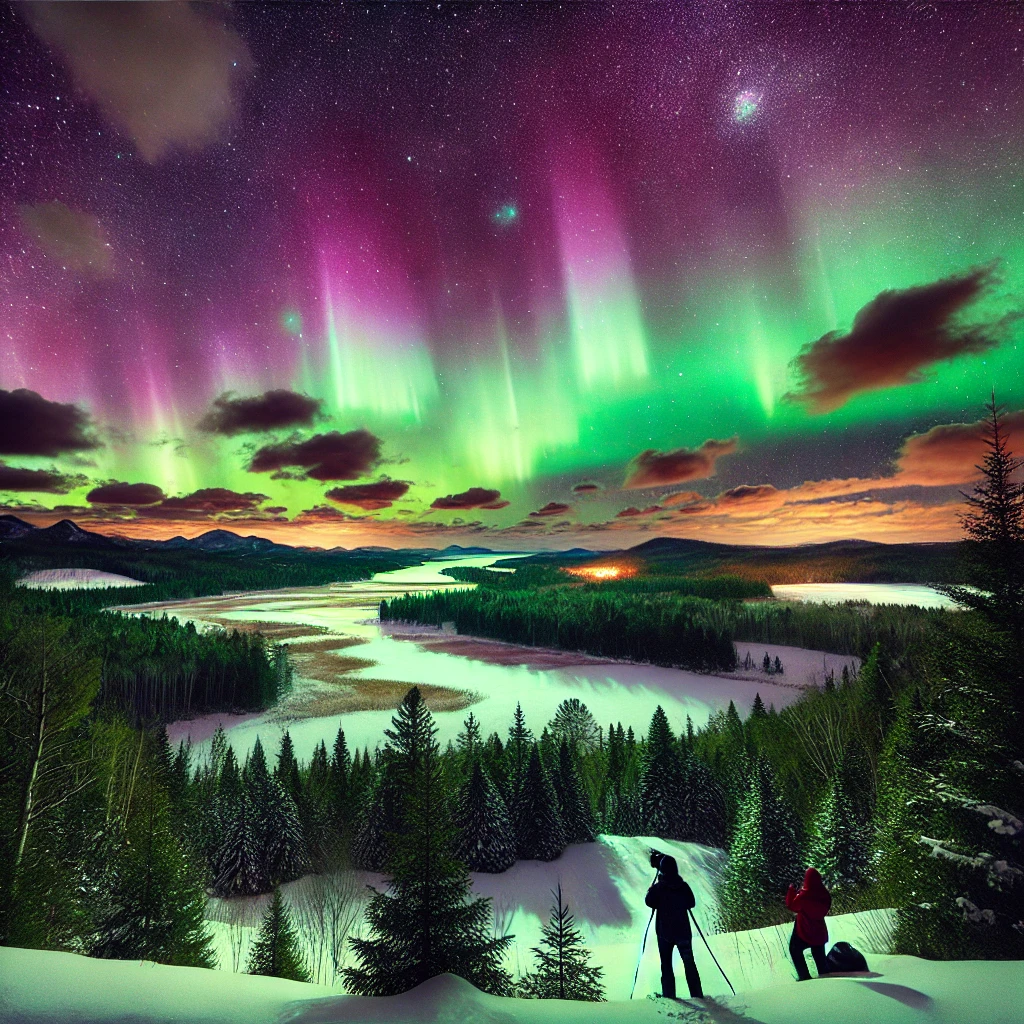A Rare Celestial Display Expected Over Parts of the U.S.
Skywatchers across the northern United States are in for a breathtaking treat tonight as the aurora borealis, or Northern Lights, is forecasted to illuminate the sky. Due to a moderate geomagnetic storm, 10 states—including New York, Washington, Montana, and Wisconsin—could witness this stunning natural phenomenon.
According to the National Oceanic and Atmospheric Administration (NOAA), a Kp index of 5 is expected, which could push the aurora’s visibility farther south than usual. While this isn’t the most intense geomagnetic storm, it’s enough to produce dancing waves of green, purple, and red lights across the night sky in select locations.
Where and When to See the Northern Lights
The best chances for viewing the aurora borealis tonight are in the following states:
- Washington
- Montana
- North Dakota
- Minnesota
- Wisconsin
- Michigan
- New York
- Vermont
- Maine
- Idaho
For optimal viewing, head to a dark, rural location away from city lights and look toward the northern horizon. Peak viewing times will be between 10 p.m. and 2 a.m. local time, depending on cloud cover and atmospheric conditions.
What Causes the Northern Lights?
The aurora borealis occurs when charged particles from the sun interact with Earth’s magnetic field, producing mesmerizing light displays in the sky. This current geomagnetic storm was triggered by a coronal mass ejection (CME) from the sun, which sent a wave of solar energy toward Earth’s atmosphere.
“These storms are relatively common but don’t always reach far enough south to be visible in the lower U.S.,” said a NOAA space weather expert. “Tonight’s storm is moderate, but if conditions are right, it could result in a spectacular show for lucky viewers.”
Weather Conditions & Visibility
While the aurora forecast looks promising, weather conditions will play a crucial role in visibility. Some areas in the Northeast and Upper Midwest are expected to experience cloud cover, which could obscure the view. Clear skies and low light pollution will offer the best chance to witness the phenomenon.
Before heading out, skywatchers should check local weather updates and space weather forecasts from NOAA’s Space Weather Prediction Center (SWPC) for the latest geomagnetic activity alerts.
A Rare Sight—Don’t Miss It!
While the Northern Lights are often reserved for Alaska, Canada, and Arctic regions, geomagnetic activity like tonight’s can extend their reach into more populated areas of the U.S. If you’ve never witnessed this celestial phenomenon, tonight could be your chance!
Grab a warm jacket, find a dark spot away from city lights, and look to the northern sky. The universe is putting on a show—don’t miss it!

